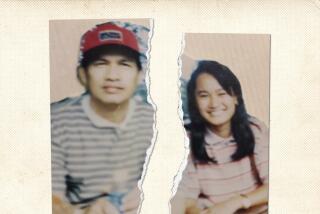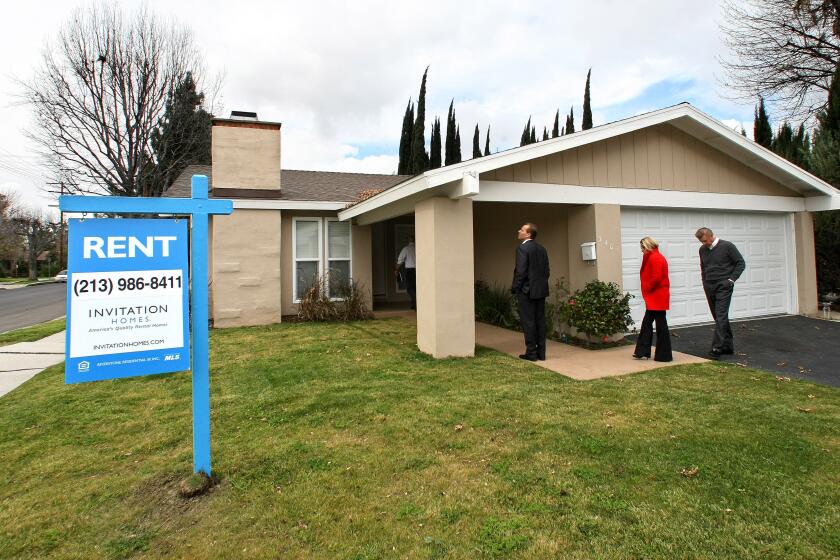Kolender’s Recollections Vague on KKK Detail : Police Chief’s Knowledge Seen as Pivotal to Lawsuit by Undercover Officer
San Diego Police Chief Bill Kolender repeatedly insisted Wednesday that he had little or no recollection of a lengthy police undercover operation in which one of his reserve officers spent two tumultuous years infiltrating the Ku Klux Klan.
Kolender, responding to a series of questions from the attorney for Douglas K. Seymour, testified that he could only vaguely remember the undercover detail that was blown after the Klan leader accused the Police Department of spying on his congressional campaign.
Kolender was testifying in the Superior Court trial of a 5-year-old lawsuit in which Seymour alleges that the police coerced him into staying too long in the difficult assignment, thereby resulting in marital and personal problems. Seymour is seeking up to $2.5 million.
The extent of Kolender’s knowledge of the Klan assignment was viewed as pivotal because Seymour also contends that his police superiors disavowed him after the Klan leader, Tom Metzger, accused them of violating federal law by spying on his 1980 campaign.
Assistant Chief Bob Burgreen testified Tuesday that Kolender met with his top staff and decided to leave Seymour in the detail, despite the fact that Metzger was running for political office.
‘I Don’t Remember’
“I don’t recall that subject at all,” Kolender testified Wednesday, when asked about the meeting. “I’m saying I don’t recall it happening. I don’t remember.”
Burgreen said it was Kolender’s “style” to take advice from his top staff on difficult decisions, such as continuing the Seymour assignment despite the political campaign.
But Kolender said that it is his policy to delegate authority and to let his command staff make decisions, such as the one on continuing the Klan detail.
In fact, Kolender said, he never met Seymour, a reserve police officer and construction contractor when he was recruited to penetrate the Klan.
Under a very short cross-examination, the chief said that he supervises 2,500 employees and about 300 reserve officers. He said he is never told all of the names and identities of undercover officers and informants.
Some Vague Recollections
Kolender’s recollections on most all other aspects of the Klan assignment were extremely vague.
Attorney David M. Korrey asked him if he had approved the Klan detail.
“Not that I can recall,” the chief said. “I remember knowing about it. But I don’t recall saying, ‘Yes, that’s OK.’ ”
He said his intelligence unit would not have needed his permission to place Seymour in the undercover assignment, adding: “They would have known it was OK, and I obviously would have approved it.”
He said he thinks he was told in a briefing session about the operation only after Seymour had already penetrated the Klan.
“All I know was that, in the briefings, I was told there was someone in the Klan who was getting us information,” he said. “That’s all I was told. I didn’t know any more.
“I was told later on the person who was giving information was having alcohol and family problems, and that he would no longer be doing it. At some meeting, someone said he was experiencing personal problems. I think they said alcohol and family problems, and he would be taken out of the program.”
Seymour has testified that the undercover work led to his divorce and that he also suffered emotional difficulties and became dependent on drugs and alcohol.
Kolender said he could not recall whether a reserve officer had ever before or since been used in a similar undercover detail.
He was asked about his testimony in a deposition last year in preparation for the trial and said he could not remember making certain statements about the case.
Kolender said police files are often shredded, apparently bolstering Seymour’s allegation that all his police reports were destroyed.
But he said he did not know when or if the Seymour reports were shredded.
He also said he could not remember the laws and the Police Department’s policies on how long reports must be kept before they can be destroyed. “I do not know. I have people who handle that.”
The chief was unclear about public statements he made denying that there was any police infiltration of the Klan and, later, publicly conceding that there was an informant but that the informant was not a San Diego police officer.
“I don’t recall making that statement,” he said.
One item the chief remembered: He recalled obtaining special grant money to have a new communications booth built at the old police headquarters 10 years ago. He remembered that the booth would be used for press conferences and other events. And he remembered that he was able to find a donor for the booth’s construction.
But he could not recall who built the booth. Nor could he recall inspecting the construction work while it was under way.
“I could have,” he said. “I don’t remember.”
Earlier testimony has shown that the booth was built by Douglas K. Seymour.
More to Read
Sign up for Essential California
The most important California stories and recommendations in your inbox every morning.
You may occasionally receive promotional content from the Los Angeles Times.










